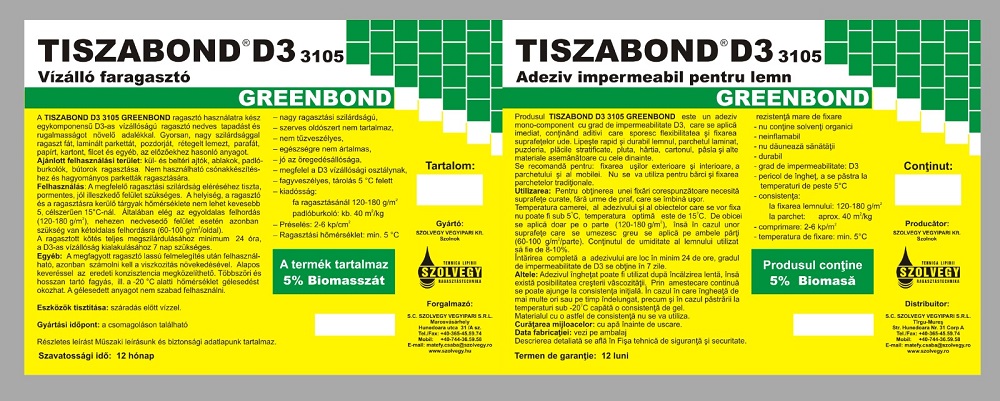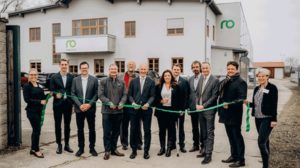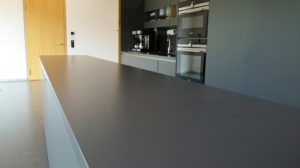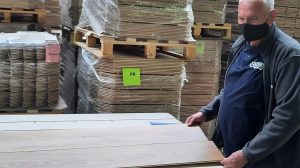Szolvegy, manufacturer and distributor of TISZABOND adhesives, announces the introduction of the first biomass resin-based adhesive in its product range. It is a first step in the process of gradually replacing petroleum-based resins with those from renewable sources. As many small steps as possible are needed to halt climate change caused by very high carbon dioxide emissions. Global warming is no joke and this summer proved it. Record temperatures of 48-49°C in southern Spain in the shade show that urgent action is needed. Fortunately, an agreement - the European Green Deal - has been in place at EU level since 2019, aiming to make Europe climate neutral by 2050.

European Green Pact
The European Commission's Green Pact (European Green Deal), unveiled on December 11, 2019, to become the global leader in a sustainable and competitive economy. The overarching objective is for Europe to become climate neutral by 2050. The pact's proposals aim for all sectors of the EU economy to achieve climate goals in a fair, cost-effective and competitive way, building a new economic model.
The Pact was supported by all 27 Member States. As a first step towards neutrality in 2050, Member States have committed to reduce emissions by at least 55% by 2030 compared to 1990 levels. This will create new opportunities for innovation, investment and jobs and will lead to reduced emissions and external energy dependence. But above all, it will improve the health and well-being of the Union's citizens.
Among the pact's themes are making transport of all kinds sustainable, creating jobs green, making buildings more energy efficient, building for greener living, reducing greenhouse gases by cleaning energy system, working with nature to protect our planet and our health. The latter theme also includes replacing materials obtained by processing fossil resources (oil, natural gas, coal) with those obtained from renewable sources (agricultural, forestry and urban waste).
Adhesive D3 with biomass content
The concern to achieve climate goals was also present at Ligna 2023. One of the main themes was the bio-economy, i.e. the economy based on renewable resources, not fossil fuels and minerals. Companies have realized that change cannot be postponed and have committed significant resources to research, development and innovation.
Szolvegy is on the road to this change with the introduction of TISZABOND D3 3105 GREENBOND 3105 GREENBOND adhesive in its product range. The adhesive contains 5% biomass resins. As honestly recognizes the manufacturer, the percentage may seem small. But it is important because it shows a concern for change. It also shows that it is possible to get resins with very good adhesive properties from renewable raw materials, not oil. This is a limit that has been crossed, and it will now be much easier to increase this percentage.
TISZABOND D3 3105 GREENBOND is a polyvinyl acetate-based dispersion adhesive containing reactive groups and a number of additives that prevent settling and improve adhesion. A percentage of 5% of the resin is derived from renewable (biomass) raw materials. The adhesive is in class D3 moisture resistance. It can be used indoors in high humidity environments (bathrooms, kitchens), outdoors in protected environments or with short exposure to moisture and in construction, when joining wood to other porous materials (fixing steps to concrete stairs, fitting doors and windows, etc). It is not recommended for gluing structures permanently exposed to water (boats, ships) and those permanently exposed to static loading (supporting roofs).
The adhesive is used undiluted. Only if necessary add max. 10% water. Please note that dilution increases the drying time and decreases the thickness of the adhesive film. Therefore it is better to use undiluted, vigorous shaking before use will help the fluidization. Apply by hand with brush, roller or spatula or mechanically. Surfaces to be glued should be cleaned of dust and wood should have a moisture content in the range 8-10%. Temperatures of the medium, wood and adhesive should be as close to and around 15°C.

Biomass, source of green energy and raw material for industrial resins
From a biological point of view, biomass is any kind of organic matter. The term has been adopted to define a raw material green from which energy can be obtained or processed into various resins used in industry. Biomass was first obtained and developed as an alternative source of energy in 1973, when the price of oil skyrocketed due to the Arab-Israeli war.
Waste from agriculture, forestry and related industries as well as the biodegradable part of industrial and municipal waste are used to form biomass. It is only waste and residues that cannot be used for human or animal consumption. The use of biomass leads to reduced consumption of oil - the fuel and raw material for a wide range of resins - and reduced carbon dioxide emissions.
Biomass is a renewable and sustainable raw material. Because it comes from living organic matter, it grows naturally, absorbing some carbon dioxide from the atmosphere during its lifetime. When processed, the carbon dioxide released is offset by that absorbed during growth. This reduces the overall carbon footprint.


































Add comment